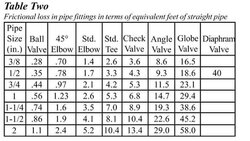sweetheat
Member
Any hardware or building supply would have form banding. It comes in a long roll with holes punched every inch for nailing to the form boards. It works quite well for major concrete pours. Should work OK for storage tanks. It's not rust proof though. Steel wailers around on 4 sides would also work. Lumber banding would work too, their's a special tool used to tighten them up. Rich, I beleive tarm uses EPDM. I have questions about drain holes in the tank. Do they make fittings designed for EPDM? Does the tank water stay put or will it circulate? Is it just the heat storage medium? And the exchangers do the water circulating? Plumbing term for heat exchanger is hx? correct? How far are you from coastal downeast sparke? I would like to come and look at your set up some day. A day closer to clean heating. sweetheat


